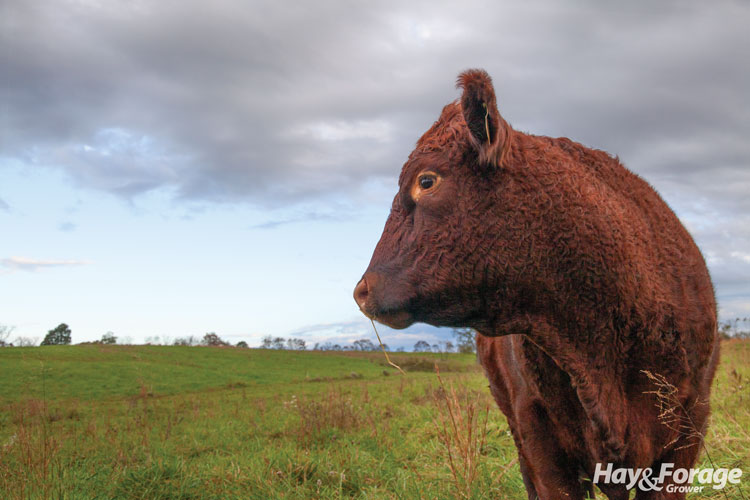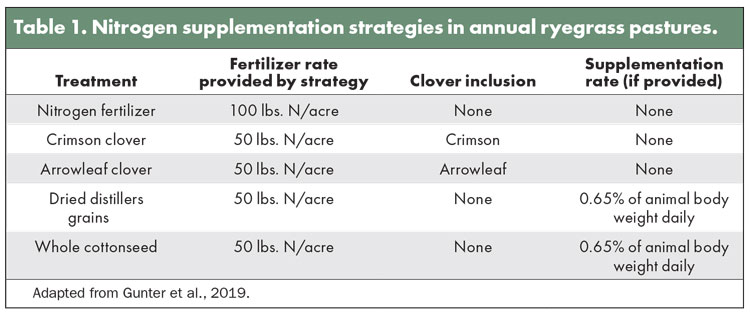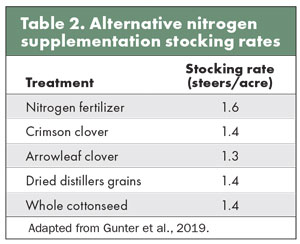
In my role as an extension specialist, my team and I conduct many research trials related to grazing management and conserved forage production. Whenever we present our research data, we include a discussion about how the weather influenced our conditions in the study.
One of the research faculty in our department always asks, “How do you handle dealing with the weather from year to year, and how unpredictable can it be?”
There isn’t one singular answer for this, but the best mantra that applies to both research and on-farm forage management situations is small things can become large things. If we check the small boxes first, it helps insulate us some from the unpredictability of Mother Nature.
Mitigating risk and susceptibility in forage-livestock systems is important. Changing weather patterns impact plant growth aboveground and belowground and affect how undesirable species may get a foothold in our perennial forage systems. These are some strategies we can use to help our forages remain productive and persistent under varying conditions.
Don’t guess, soil test. Soil pH has a significant influence on plant available nutrients needed for growth and persistence of perennial grasses. Sometimes fertilizers are applied to forages and little to no growth response is observed. This is often because soil pH is the first limiting factor in getting nutrients to the plant.
If soil pH is not in the correct range, forages cannot take up needed nutrients from the fertilizer application. A pH of 6 to 7 enhances uptake of major nutrients needed for plant growth.
Grid soil sampling provides a more precise breakdown of where soil nutrient deficiencies may be present and the scale of those deficiencies. There are many industry and third-party services that offer grid sampling, as well as recommendations on fertilizer needs. Managing fertilizer inputs more precisely helps improve forage persistence, which is important in buffering against changing weather conditions.
Maintain strong roots. When we think about our forage systems, we generally only think about what is aboveground and available for grazing or harvesting. To enhance perennial forage persistence, manage the aboveground growth in a way that supports belowground growth. Forage root systems are the bank for supporting forage growth. If aboveground growth is short, the forage will pull directly from its root reserves to support plant regrowth. Over time, if this happens frequently, it will weaken the root system, depleting root mass and carbohydrate reserves. A healthy root system can help forage plants recover quickly following short-term changes in weather conditions, such as a flash drought.
Get out and look (GOAL). Another “easy button” strategy for sustaining forage production is proactive efforts to limit weed pressure. Get out and look at pasture composition. What are the species you see in your fields? Are they good forages that you want to be present, or are other less productive species starting to get a foothold?
Nature does not like bare ground, and undesirable species can start making their way into pastures where plants are continuously overgrazed. Understanding what species are present in your system and methods for mitigation can help make pastures more productive and less susceptible to decline.
Stretch pasture reserves through supplementation. When weather conditions limit grazed forage availability, supplementing pastures can help extend forage availability. In addition to stretching forage supplies, supplementation can improve the energy density of the animal’s diet and potentially enhance their performance on pasture.
A multiyear evaluation of grazing annual ryegrass was conducted in central Alabama to determine the effects of partially replacing nitrogen fertilization of pastures with alternative practices for cycling nitrogen (Table 1).

This included either adding annual legumes to pastures or feeding grazing animals high protein supplemental feedstuffs. Legumes or feed supplements were included at a rate to contribute an estimated 50 pounds of nitrogen per acre. When compared to the control treatment of 100 pounds of nitrogen per acre of commercial fertilizer, legume and feed supplementation strategies help offset nitrogen inputs and support similar stocking rates on pasture (Table 2).

Don’t put all your eggs in one basket. Having diversity in your forage system is another way to meter against fluctuations in weather conditions. Having multiple forage species on the farm heightens the likelihood that something will be available to graze when you need it most. As an example, we conducted a multi-year trial evaluating the use of multi-species blends in cover crop systems in southern Alabama. The forage mixture contained cereal rye, oats, crimson clover, and brassicas. The rye and oats supported early season grazing in January and February, while the clover and brassicas became more productive later in the spring. This spread forage production throughout the season.
In tall fescue-based systems, dedicating some of the acreage on the farm to warm-season forages is a strategy to take pressure off tall fescue during key times of the year. A good rule of thumb is to consider about 15% to 20% of the farm for annual forages, whether cool-season or warm-season species. For example, years of milder winters have allowed warm-season forages to continue growing farther north in the Southeast. By seeding additional forage species, we shift the growing season’s peaks and troughs. This can help mitigate risk from concentrated weather events.
We can’t control the weather, but we can control what we manage. Targeted soil, plant, and supplementation management helps our forage systems survive and persist despite shifts in weather, and diversifying pastures is a strategy to help minimize risk on the farm while boosting forage quality and extending the growing season.
This article appeared in the January 2024 issue of Hay & Forage Grower on pages 16-17.
Not a subscriber? Click to get the print magazine.

